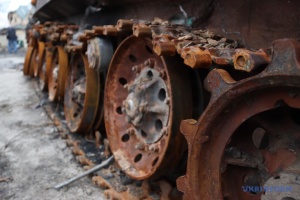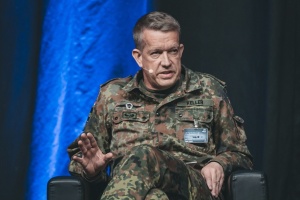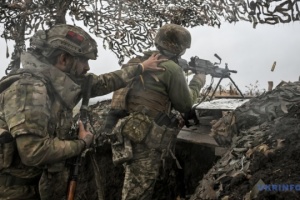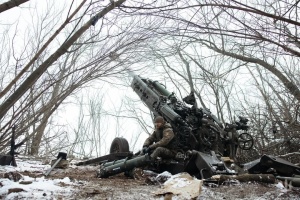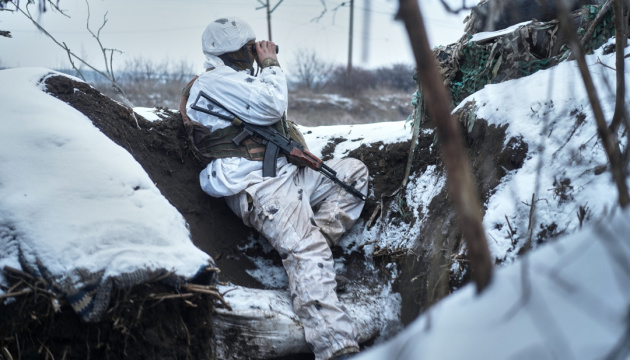
Winter will not put war on hold: what will happen on frontlines in coming months?
The second winter since Russia's full-scale invasion (the five days of February 2022 can hardly be considered a full-fledged winter) is greeted by Ukrainians not with any exaggerated hopes for a further quick and beautiful offensive by the Armed Forces of Ukraine, but with an understanding of the complexity of the situation: that this war is for a long time, and that it may not end in 2024.
The Ukrainian nation is growing up and is beginning to calmly and soberly look at the option of a positional war, as Chief of the Joint Operational Staff Valerii Zaluzhnyi recently wrote in his article, and to prepare for a long, exhausting struggle.
On the other hand, Ukrainians, especially those who understand little about military affairs but wish with all their hearts and minds to liberate all the occupied territories as soon as possible, despite the realization that this process is slow, need faith, a vision of prospects and options.
So, what are your expectations, what are your forecasts and scenarios for the situation on the frontlines in the next four months? What is the minimum and maximum that Ukraine can expect based on the current situation?
Strategic directions have been created on the Kherson, Zaporizhzhia and Donetsk fronts to ensure that our movement does not freeze in the fall and winter
In a commentary to Ukrinform, reserve colonel Roman Svitan predicted that the rains would stop the Russian offensive on the eastern front. And these are Avdiivka, Vuhledar, Bakhmut, Kupyansk - the hottest spots on the map. The Russians will not be able to move there on a large scale. This means that there is a chance that the Armed Forces of Ukraine will have additional resources to perform tasks in other places, for example, in Tokmak or on the left bank of the Dnipro.
"The left bank of the Kherson region, which is still in flux, looks even more promising than Tokmak," the military expert says. - "There is a high probability of forcing the Dnipro and operating on the left bank in the fall and winter. Because we have the shortest supply arm there. And if we have reliable pontoons, it is also quite possible to transfer equipment to the left bank."
On the left bank, the sandy soil holds tracked vehicles well, even in the rain, Mr. Svitan says. There are already several bridgeheads there, 3-4 km deep along the Dnipro. From the Black Sea near Skadovsk, it is 70-80 km. Even just expanding the sanitary zone created by our scouts will make life easier for Kherson residents who suffer greatly from enemy artillery shelling.
"To open a new breath for our offensive actions on the left bank of the Dnipro is, so to speak, a maximum program," the expert said.
But at the same time, Colonel Svitan points out that the development of the situation on the left bank will largely depend on the enemy's capabilities. "If the Russians find additional forces and means to strengthen themselves, then we are not likely to see anything special there this year. Conversely, if they do not have enough forces and means, and they also get burned badly in Avdiivka, Bakhmut, Vuhledar, Kupyansk, then...
As for the program, the minimum is Bakhmut. According to Roman Svitan, we are seeing positive dynamics in this area.
"The Armed Forces of Ukraine are in a very good position - on the dominant heights. In the area of Klishchiyivka on the eastern side of the railroad that runs from Horlivka to Bakhmut, there are several footholds that our troops are expanding. The main task is to cross the highway - we already have it under fire control - and then go to the Bakhmutka river. There are three roads there (railroad, highway and along the Bakhmutka River) running parallel from south to north towards Bakhmut from near Horlivka. When we have a serious foothold on the left bank of the Bakhmutka, we will be able to move towards Bakhmut, entering the city center from the south and cutting off the Russians. This is a strategic task that we will fulfill in the fall and winter," says the expert.
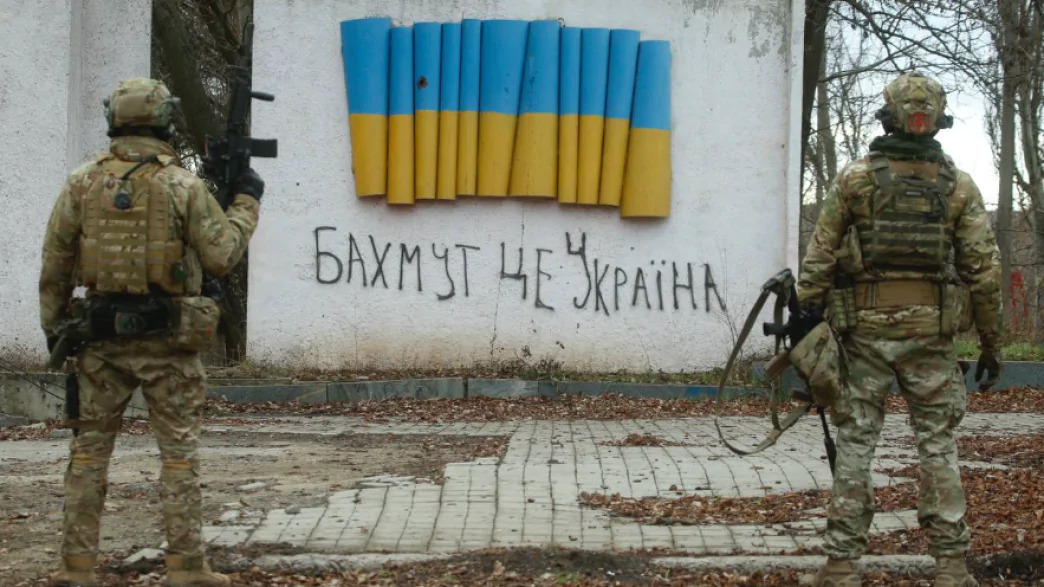
Next up is Tokmak. In September, the Armed Forces of Ukraine were active on the Zaporizhzhia direction, managing to break through the first line of enemy defense, the so-called "Surovikin line." This led to predictions: Ukraine will de-occupy Tokmak by the end of 2023. What is the situation there now, what are the prospects?
"In Zaporizhzhia region, we have left one strategic area. In the area of Robotyne, we are expanding the bridgehead and strengthening our flanks to move south. We need to expand the bridgehead by 15-20 kilometers to eliminate the problem of Russian flanking attacks. There is positive dynamics both to the west of Robotyne and in the area of Verbove," assures Mr. Svitan. - "But... "Our prospects in this area will directly depend on the supply of weapons, in particular, new types. If we receive several thousand M-26 shells with cassette warheads for HIMARS, we will be able to move towards Tokmak, cross the railroad... If they don't give us the shells (or give us insufficient numbers), our movement there will be slow, at the level of 100-200 meters per day."
Thus, the development of the situation in Tokmak directly depends on the supply of weapons, as well as on the range of ammunition supplied.
As for the Luhansk sector, the military expert believes that nothing strategic will happen there in the fall and winter: "In the Luhansk region, we do not have the ability to move on a large scale and deeply, for this we need a large number of forces and means, and we need aviation 100%. That is why we will be working in this area only in the mode of active defense. Our task is to destroy and bind the enemy."
Finally, about aviation: "After the use of ATACMS, the Russians moved their helicopters to the Taganrog area near Rostov and to the Dzhankoy area near Vesele. And this makes their lives more difficult - they need to refuel more, have less weapons on board. The bad weather in the fall and winter is also in our favor. No one will be able to operate enemy attack aircraft due to cloud cover."
However, the weather does not affect the dropping of corrected aerial bombs (CABs). They are guided by GLONASS, i.e. satellite coordinates.
"Therefore, in the next couple of months, one 'theme' will decrease, and the other may increase. Lately, the Russians have been using almost a hundred bombs a day. Unfortunately, this will remain," predicts Colonel Svitan.
However, the Armed Forces of Ukraine are ready to enter the fall-winter period, go through it, and then start the spring campaign.
"This will be the 10th military winter for us. And we are meeting it with a vision of the processes and competently curtailed areas that turned out to be secondary. There are also areas that are being developed on the contrary. Our main task - the destruction of the enemy - is going well. Every day, at least a battalion of Russians is deducted from the total number of troops, and we have very good figures for destroyed equipment. And after the third wave of the enemy's offensive, there will be even more enemy in Avdiivka. So, as such, our offensive continues. Yes, in a somewhat truncated form, but nevertheless," the military expert emphasized.
Prospects for successful advance of the Armed Forces of Ukraine in Zaporizhzhia and Kherson regions, defense with interesting opportunities in Luhansk region.
Oleksandr Kovalenko, a military observer of the Information Resistance group, says that the Armed Forces of Ukraine will be able to either conduct offensive operations or focus exclusively on defense during the fall-winter campaign. Or both at the same time, as, for example, in the Donetsk region.
"The situation on the Donetsk front is 50-50. For example, in the area of Bakhmut, local offensives of the Armed Forces of Ukraine will continue. In the southern sector, in the direction of the Bakhmut-Horlivka highway, we can expect successes in the winter. There are prerequisites for this," predicts Oleksandr Kovalenko.
Avdiivka is another matter.
"The most dangerous place is, of course, Avdiivka. If on October 10 the enemy launched an offensive, using the 1st Army Corps, plus the 20th and 150th motorized rifle divisions from the 8th Combined Arms Army of the Russian Federation, then almost a week and a half or two weeks later it was said that the entire 2nd Combined Arms Army of the Russian Federation was fighting near Avdiivka. And now there are the 15th, 21st and 30th separate rifle brigades (OBSr), which is a rather serious potential," the expert noted.
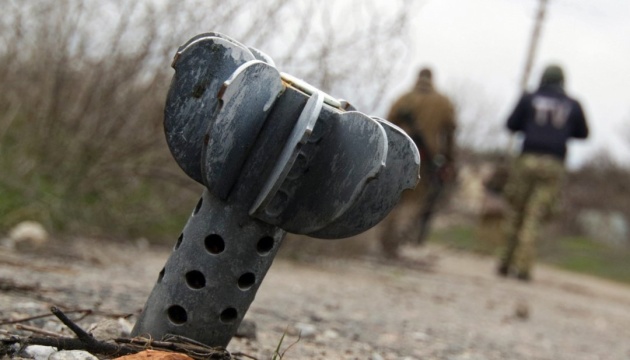
According to him, Russia has also deployed the 55th Separate Rifle Brigade, part of the 41st Combined Arms Army of the Russian Federation, near Avdiivka. It is operating in the area of Opytne. Units of the 90th Tank Division of the Russian Armed Forces have also been deployed to this area.
"And, apparently, no one is going to stop. These are the maniacal fetishists about Avdiivka. The enemy has now accumulated twice as many resources near Avdiivka as it had near Bakhmut at the beginning of the year," added Mr. Kovalenko. The length of the front line during the enemy's attack on Bakhmut was within 50 kilometers, while near Avdiivka it was just over 20 kilometers. At the same time, the number of enemy troops in Bakhmut ranged from 20 to 50,000 personnel at different periods of the offensive. And the concentration of forces near Avdiivka today is over 40,000. That is, about 2,000 per kilometer of the front.
Another point: the Ukrainian units in Avdiivka do not have a very good logistical situation: the area through which supplies are being delivered is gradually shrinking, and the routes may come under enemy fire control at any time. During the fall and winter roadlessness, this factor may further complicate the situation.
The Armed Forces of Ukraine are currently on the defensive in the Luhansk sector. However, everything can change.
"Claims to Avdiivka, where the enemy is massing huge resources, significantly weaken it in other parts of the front," the analyst says. - "For example, the occupiers are pulling units from the 2nd Combined Arms Army, whose area of responsibility is Luhansk region, to Avdiivka. "Today, we do not see Luhansk region as a bridgehead for the offensive, but as a bridgehead for defense. But I do not rule out that further weakening of the Luhansk bridgehead could lead to interesting opportunities for the Armed Forces of Ukraine there."
As for the southern direction, exactly what Valerii Zaluzhnyi said will take place there in the winter, i.e., a positional war.
"No large-scale advance or breakthrough is expected in Zaporizhzhia region. Most likely, during the winter our troops will hold the positions they managed to gain during the spring and summer campaign. However, I would not rule out surprises on the left bank of the Kherson region. It is quite possible that the Russians will be forced to move a significant resource there from Zaporizhzhia region. Thus, opening up prospects for us to move towards Tokmak," predicts Oleksandr Kovalenko.
We have every chance to finally gain a foothold on the left bank of the Dnipro, planning future operations in the direction of Skadovsk and Armyansk
Colonel Serhiy Hrabsky, a reserve officer in the Armed Forces of Ukraine, is the most skeptical: "Under the current circumstances, we should not talk about any large-scale offensive operations on our part. The main task of Ukrainian troops in the fall and winter is to hold the front line, preventing the enemy from improving their positions. In particular, to prevent the Russians from breaking through to the Kupyansk area and reaching the Oskil River, because if things go badly, it will seriously complicate our situation."
However, if we talk about the Soledar ledge, of which the city of Bakhmut is a part, our active actions will continue there.
"Our goal is to break through and cut off the Soledar ledge by cutting off communications, in particular the T0513 highway and the M03 highway. Of course, if we have enough resources. If not, we have to consolidate our positions as much as possible," emphasized Mr. Hrabsky.
"Holding Avdiivka is also critically important for us. With the loss of this town, as the expert put it, the enemy will have an opportunity to improve very seriously for future operations.
"With the line leveled in the Avdiivka area, the enemy will be able to make greater use of the Donetsk transportation hub and maneuver forces and means along the entire front line. Donetsk is an important hub through which we are still having a serious impact on the enemy, preventing him from carrying out large-scale redeployments. Our Avdiivka offensive serves this purpose," our speaker emphasizes. - "The enemy is aware of this, and therefore makes desperate attempts to push us out and knock us out, and ideally defeat us there. We have to prevent this from happening."
The situation is similar in the Mariinka sector, where the enemy is trying to move further into the Kurakhove area: "Kurakhove is an important energy facility and we must not allow the enemy to break through there."
Then there is Vuhledar. Vuhledar is also critically important for both us and the enemy.
"From Ukraine's point of view, Vuhledar means Volnovakha. A breakthrough to the Volnovakha area is a very serious limitation for the enemy in terms of further operations in the southern direction. Volnovakha is a railroad junction where we can influence the situation. That is why the Russians are trying to push us back from the positions near Vuhledar where we are defending ourselves," says Serhiy Hrabsky.
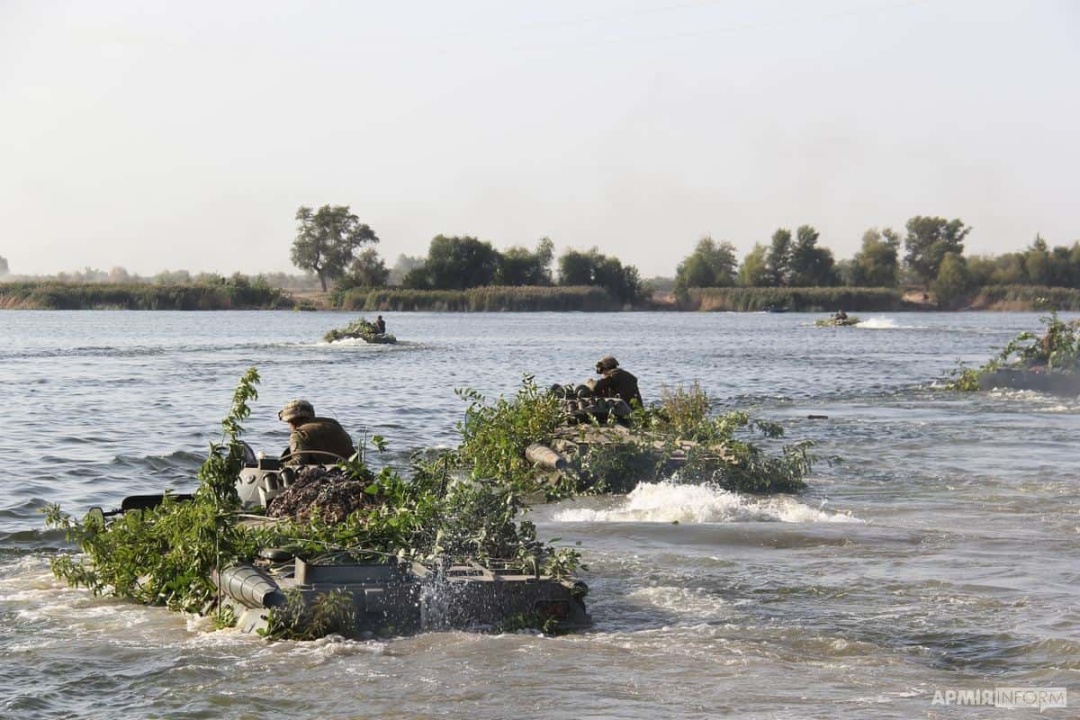
In the southern sector, we will maintain the gains we made during the spring and summer campaign.
"I do not expect anything serious from our side in the Berdiansk sector in the near future. But in the area of Tokmak, we have the so-called "Robotyne pocket" - a ledge that we have to hold as a springboard for further offensive in this area of the front. This area has been taken by us with great effort and losses. If we withdraw from there, we will still have to go through the same road again later. You understand that the one who goes through the road twice loses more," the military expert emphasizes.
As for our units on the left bank of the Dnipro.
"The positions we hold there now are not sufficient to talk about the rapid deployment of a serious grouping of forces and means. Only if the bridgehead is expanded, we have every chance to finally gain a foothold on the left bank of the Dnipro and plan our operations towards Skadovsk and Armyansk," warns Mr. Hrabsky.
In general, the war is entering the stage mentioned by Valerii Zaluzhnyi in his article - the positional stage. And this is not much related to the natural factor, i.e. the weather.
"The weather has the least impact on us. It is more about equipment and the level of provision of units. And there are some problems here. As long as there is no reliable air cover for our troops, as long as the troops are not provided with a sufficient number of electronic warfare systems, in particular, we will not be able to conduct serious offensive actions. Therefore, the front line is not likely to change significantly in the winter. Our task now is to conduct mostly active defense. At the same time, we are to increase the quantitative and qualitative indicators of equipment and weapons, air defense and electronic warfare systems, ammunition, personnel, and form new units. And, wait for the promised fighters," summarized Sergiy Hrabsky.
Myroslav Liskovych, Kyiv

